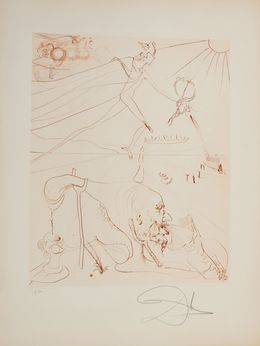
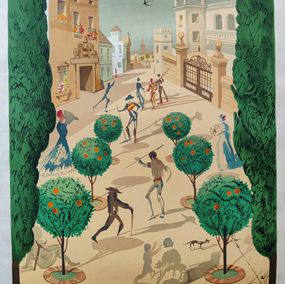


Persistance de la Mémoire
Salvador Dali
Sculpture - 36.5 x 41 x 7 cm Sculpture - 14.4 x 16.1 x 2.8 inch
$17,582

5 assiettes en porcelaine « Les diners de Gala »
Salvador Dali
Design - 28 x 31 x 1 cm Design - 11 x 12.2 x 0.4 inch
$2,836

Que Font Ces Gens
Salvador Dali
Fine Art Drawings - 15.5 x 9.5 x 0.2 cm Fine Art Drawings - 6.1 x 3.7 x 0.1 inch
Price upon request
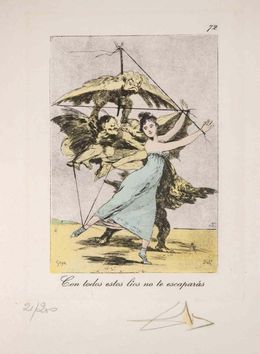
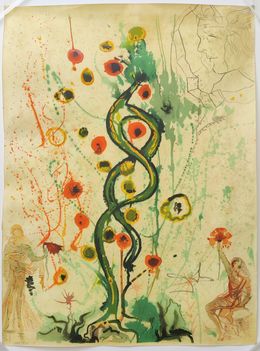

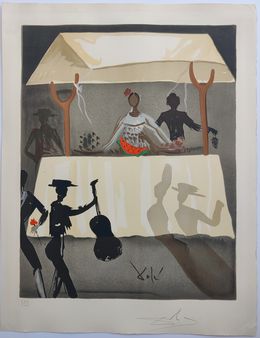
Outside The Bull Ring: The Fruit Seller from Carmen
Salvador Dali
Print - 65 x 50 x 0.1 cm Print - 25.6 x 19.7 x 0 inch
$4,379
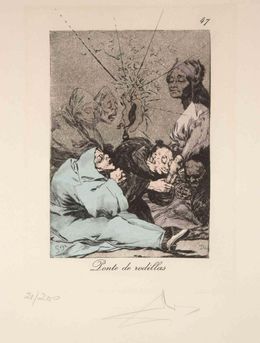
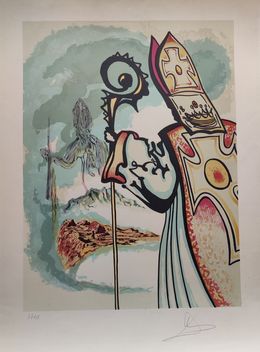
King Richard from Ivanhoe Suite
Salvador Dali
Print - 75 x 54 x 0.1 cm Print - 29.5 x 21.3 x 0 inch
$4,492
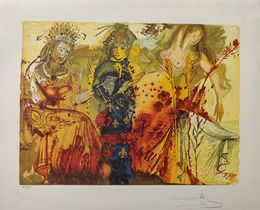
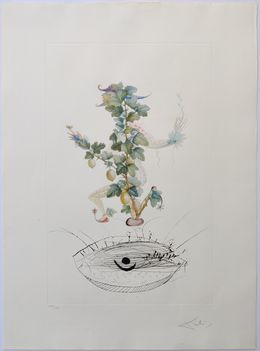
Révérence du groseillier from Flor Dali/Les fruits
Salvador Dali
Print - 75 x 53 x 0.1 cm Print - 29.5 x 20.9 x 0 inch
$8,916

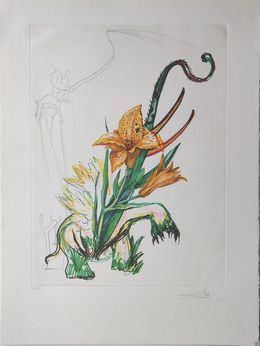
Hemerocallis thumbergii elephanter from Surrealistic Flowers
Salvador Dali
Print - 75 x 56 x 0.1 cm Print - 29.5 x 22 x 0 inch
$8,916
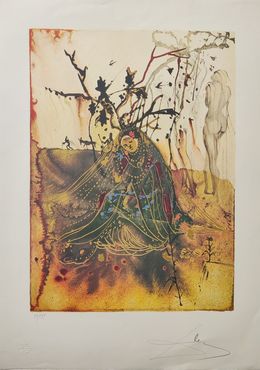
Summer from Four Seasons
Salvador Dali
Print - 75 x 53.5 x 0.1 cm Print - 29.5 x 21.1 x 0 inch
$6,443
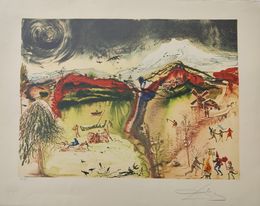
Autumn from Four Seasons
Salvador Dali
Print - 53.5 x 67.5 x 0.1 cm Print - 21.1 x 26.6 x 0 inch
$6,443
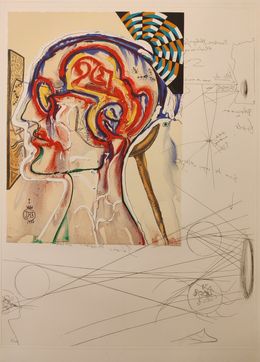
Spectacles with Holograms and Computers
Salvador Dali
Print - 77 x 55.5 x 0.1 cm Print - 30.3 x 21.9 x 0 inch
$7,770
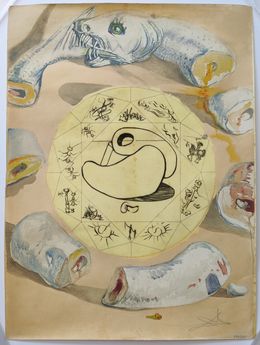
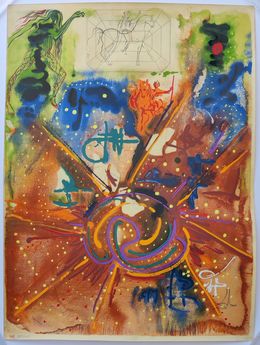
Le Yin et le Yang (Yin and Yan)
Salvador Dali
Print - 77 x 56 x 0.1 cm Print - 30.3 x 22 x 0 inch
$9,370
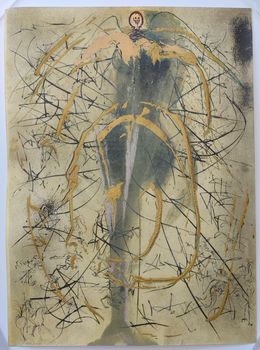
L'Ange de l'Alchimie (The Angel of Alchemy)
Salvador Dali
Print - 77 x 56 x 0.1 cm Print - 30.3 x 22 x 0 inch
$8,235

Hommage aux Petits Lits Blancs (L'art dans les bijoux)
Salvador Dali
Print - 76 x 56 x 0.1 cm Print - 29.9 x 22 x 0 inch
$4,742
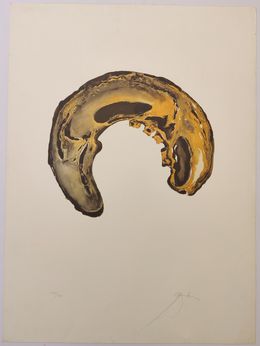
Le Crane, from Anamorphoses
Salvador Dali
Print - 76 x 56 x 0.1 cm Print - 29.9 x 22 x 0 inch
$4,945
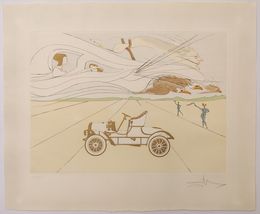


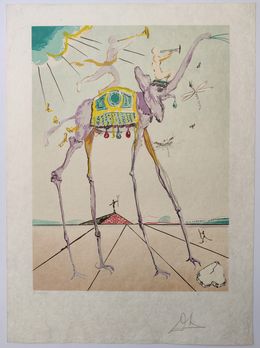

The Immaculate Conception
Salvador Dali
Print - 60 x 46 x 0.1 cm Print - 23.6 x 18.1 x 0 inch
$5,649
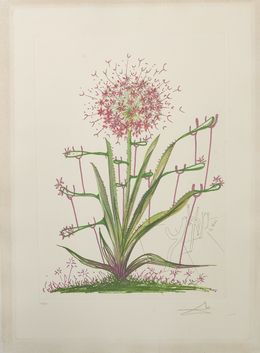
Cactus (+ Crutches) Les Bequilles
Salvador Dali
Print - 75 x 55 x 0.1 cm Print - 29.5 x 21.7 x 0 inch
$4,174
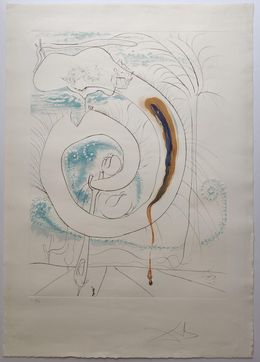
Le Cercle viscéral du cosmos
Salvador Dali
Print - 100 x 70 x 0.1 cm Print - 39.4 x 27.6 x 0 inch
$5,649


Eléphant de Triomphe
Salvador Dali
Sculpture - 53 x 25 x 14.5 cm Sculpture - 20.9 x 9.8 x 5.7 inch
$48,187


Le Portrait de La Fontaine
Salvador Dali
Print - 76 x 57 x 0.05 cm Print - 29.9 x 22.4 x 0 inch
$1,361 $1,225

Principio de Incertidumbre de Heisenberg
Salvador Dali
Print - 43 x 32 x 0.1 cm Print - 16.9 x 12.6 x 0 inch
$1,475


Couple A Cheval (Suite Mythologique Nouvelle)
Salvador Dali
Print - 77 x 56.5 x 0.1 cm Print - 30.3 x 22.2 x 0 inch
$1,021
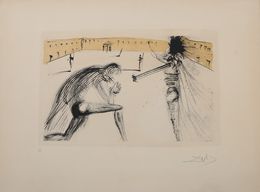
Le Pardon De Sigismund (La Vida Es Sueno)
Salvador Dali
Print - 57.5 x 79 x 0.1 cm Print - 22.6 x 31.1 x 0 inch
$1,021
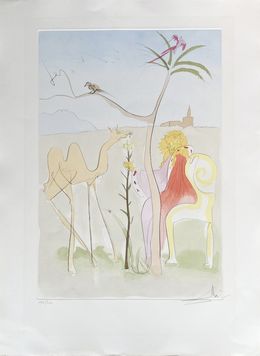
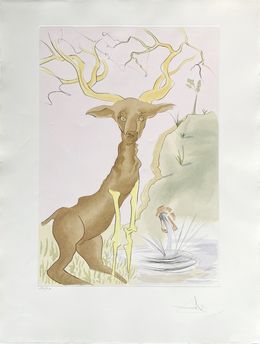
Le Cerf se voyant dans l'eau
Salvador Dali
Print - 76 x 57 x 0.05 cm Print - 29.9 x 22.4 x 0 inch
$2,269
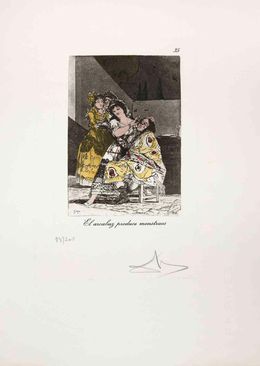
El Arcabuz Produce Monsters
Salvador Dali
Print - 23.5 x 17.2 x 0.2 cm Print - 9.3 x 6.8 x 0.1 inch
$1,361


The Horse that Wanted Revenge on the Stag
Salvador Dali
Print - 59 x 79 x 0.1 cm Print - 23.2 x 31.1 x 0 inch
$1,531
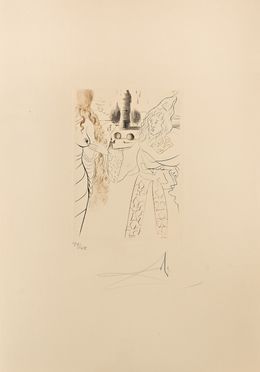
The Woman Taken in Adultery
Salvador Dali
Print - 45 x 31 x 0.1 cm Print - 17.7 x 12.2 x 0 inch
$1,134
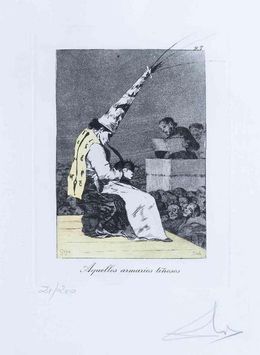
Aquellos armarios tinosos
Salvador Dali
Print - 23.5 x 17 x 0.2 cm Print - 9.3 x 6.7 x 0.1 inch
$1,304

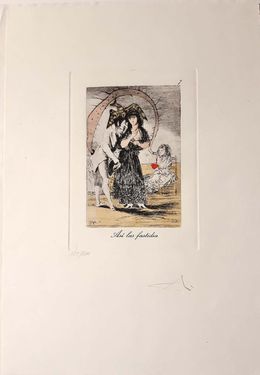

Plate from 'Tristan and Isolde': Tristan's Testament
Salvador Dali
Print - 44 x 32 x 0.1 cm Print - 17.3 x 12.6 x 0 inch
$1,872
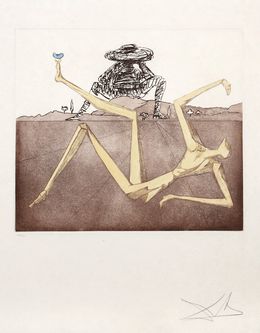
The Heart of Madness from Historia de Don Quichote de la Mancha
Salvador Dali
Print - 76.2 x 55.9 cm Print - 30 x 22 inch
$3,500

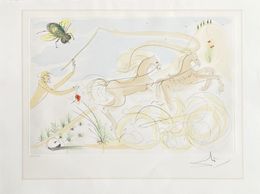
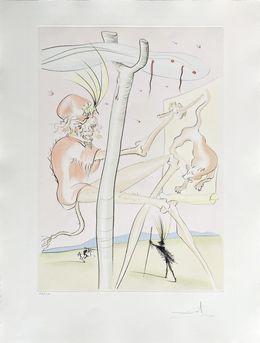

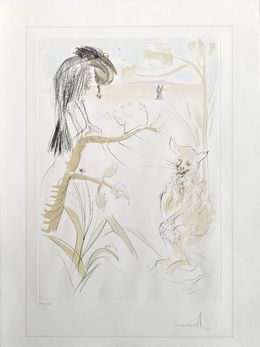
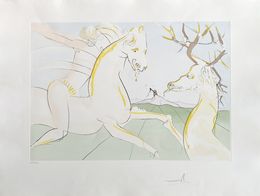
Le Cheval s'étant voulu venger du Cerf
Salvador Dali
Print - 57 x 76 x 0.05 cm Print - 22.4 x 29.9 x 0 inch
$2,269
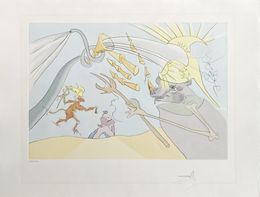
L'Eléphant et le Singe de Jupiter
Salvador Dali
Print - 57 x 76 x 0.05 cm Print - 22.4 x 29.9 x 0 inch
$2,269
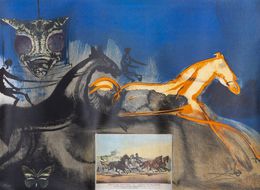
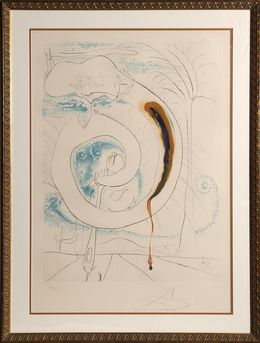
Le cercle visceral du Cosmos from La Conquete du Cosmos
Salvador Dali
Print - 97.8 x 69.9 cm Print - 38.5 x 27.5 inch
$4,500
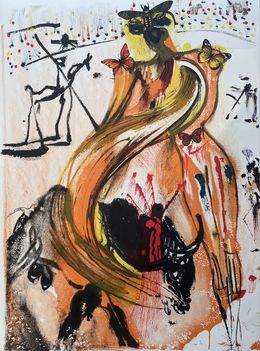
Tauromachie aux papillons (1)
Salvador Dali
Print - 76 x 54.5 x 0.02 cm Print - 29.9 x 21.5 x 0 inch
$1,361

Jeremiah from Our Historical Heritage
Salvador Dali
Print - 66 x 50.5 cm Print - 26 x 19.88 inch
$4,500

Homage a Leonardo da Vinci - Airplane
Salvador Dali
Print - 56 x 76 x 0.1 cm Print - 22 x 29.9 x 0 inch
$1,815
The difference between the surrealists and me is that I am surrealist.
Biography
Salvador Dalí, in full Salvador Felipe Jacinto Dalí y Domenech, was born May 11, 1904, in Figueras, Spain, and died on January 23, 1989. This Spanish surrealist painter and printmaker was known for his explorations of subconscious imagery.
As an art student in Madrid and Barcelona, Dalí absorbed a number of artistic styles and displayed unusual technical dexterity as a painter. It was not until the late 1920s that two events brought about the development of his mature artistic style. First, his discovery of Sigmund Freud's writings on the erotic significance of subconscious imagery. Second, his affiliation with the Paris Surrealists, a group of artists and writers who sought to establish a “greater reality" of the human subconscious over reason. To evoke images from his subconscious mind, Dalí partook in self-induced hallucinatory states, a process he described as “paranoiac-critical".
Upon Dalí establishing this method, his painting style matured at an extraordinary rate. Thanks to Rene Magritte and Joan Miró, from 1929 to 1937, Dalí had produced the artworks that had earned him the title of the world's best-known Surrealist artist. He depicted a dream world in which commonplace objects are juxtaposed, deformed, or otherwise metamorphosed in a bizarre and irrational manner.
The famous artist dabbled in other media as well. Alongside Spanish director Luis Buñuel, Dalí made two Surrealist films—Un Chien Andalou (1928; An Andalusian Dog) and L'Âge d'Or (1930; The Golden Age)—that are similarly filled with grotesque but highly suggestive images. Dalí also wrote books; perhaps the most interesting and revealing being The Secret Life of Salvador Dalí (1942-44).
By the late 1930s, Dalí switched to painting in a more academic style under the influence of the Renaissance painter Raphael. By doing so, he was consequently expelled from the Surrealist movement. Thereafter, he spent much of his time designing theatre sets, fashionable shop interiors, jewelry, as well as exhibiting his genius for flamboyant self-promotional stunts in the United States, where he lived from 1940 to 1955.
From 1950 to 1970, Dalí painted many works with religious themes, although he continued to explore erotic subjects, childhood memories, and themes surrounding his wife, Gala. Despite their technical accomplishments, Dalí's later paintings are not as highly regarded as his earlier works.
Nationality
Categories
Artistic movements











